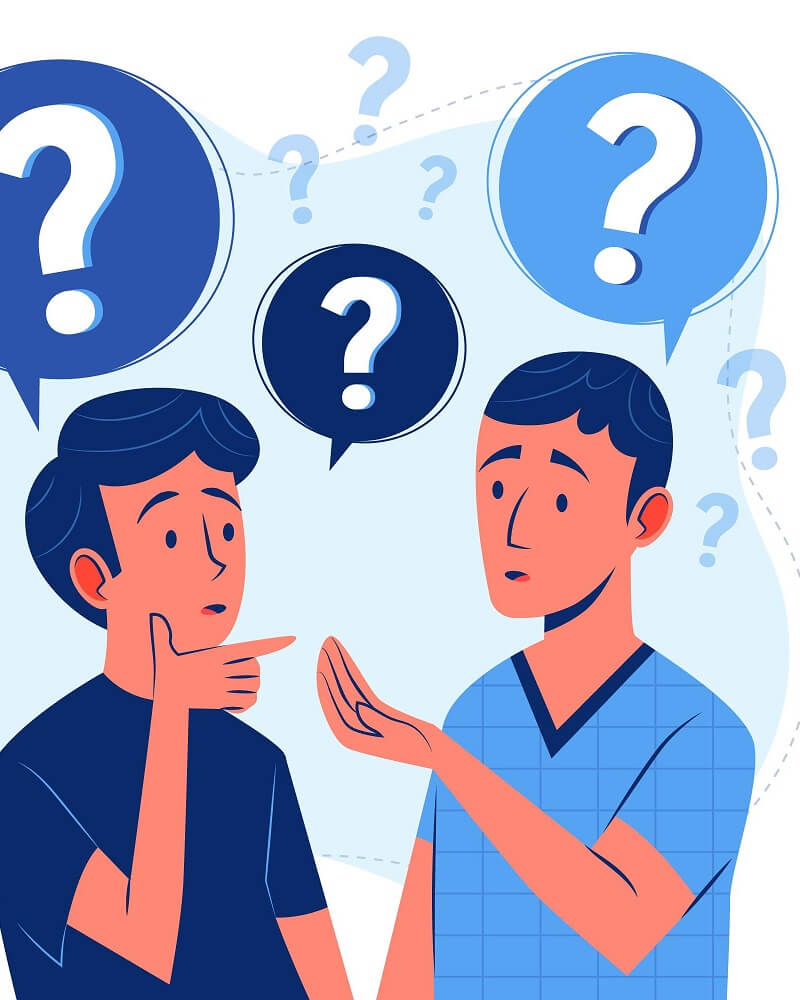Book Blaster Issue 3
OU student attributes 95% result to PhotoReading!
Peter Barka with his tutor’s report saying he’d got 95% for his Open University essay on Freud.
Peter Barka got quite a shock on May 2 when he opened up the envelope containing his marks for two Open University essays he wrote. “I couldn’t believe it — I got 95% for an essay on Freud and 88% for one on Piaget. My tutor wrote: ‘In the Freud essay you analysed the relevant concepts with unusual depth and insight. Clearly a pass 1 (95%). A similar standard is maintained in the short notes questions. You have evidently gained a great deal of knowledge which will be of use throughout the course.’ What amazed me was that I was only expecting 65-70% as I hadn’t done any background reading — I didn’t get round to it in time — or the expected 15 hours a week study time!
I first did an OU home study course in social sciences 14 years ago, getting Cs and Ds and a bare pass. So I’m not a model student by any means — I was just expecting a C grade for these particular essays. You printed a letter from me in issue 2 of the PhotoReading newsletter. At that time I’d got 73% for an essay I’d done just after I’d started studying PhotoReading. Since then I’ve finished the PhotoReading course but not had any major revelations — until now!
All I did was PhotoRead the relevant chapters on Freud and Piaget, then, when I rapid read them, I noticed that the text seemed to have a tinge of familiarity to it. I also PhotoRead some essay/thesis-writing guides without activation. When I sat down and wrote the essay I felt I knew something about the subject. But after I wrote the essay I thought ‘Oh my god, I’ll probably do worse than last time when I got 73%’, especially as I’m very left brain, and the subject matter was more right brained.
In the course the Dictionary Game didn’t work for me, and some of the other exercises didn’t work too well either. But I stuck with it, and now — wow! I’m glad I did.” Peter rang us with the news on the day he got the results: “I feel delirious. I’ve been dancing around like an idiot. then I began to doubt myself again! I’m just shocked at the result, and I feel quite shaky when I talk to my friends about the possibilities of PhotoReading. I got to know about the PhotoReading course from a LifeTools mailing before Christmas as I bought a MindLab last year. I bought the course there and then. Recently I saw an ad for PhotoReading in the Daily Express and thought ‘On no, the secret’s out!’ But you can’t be greedy can you! Everyone deserves to find out about PhotoReading and benefit from it as much as I have.”
Activate PhotoReading — simply and effectively
A lady from London called Illavia rang me the other day. She works in medical research and needs to get through piles of medical journals that pass across her desk — and wanted to know how best to prove that the PhotoReading was working.
Here’s what I suggested: PhotoRead two journals every day no matter what, so it becomes a habit. then sit back and mentally state a purpose such as ‘I’d like a specific new technique that some doctors are using to improve medical aftercare.’ Pick up the two journals, one in each hand, and see which one seems to be the best to activate. One of them may just feel like it’s the right one, or one may look brighter than the other — or you might try one as you seem to prefer the way the pages rustle. This way you are engaging your subconscious mind, getting out of your usual left-brain thinking, and starting to play.
An obvious way to proceed is to look at the contents page of the mag you’ve chosen, and see if one article seems to catch your eye, whether it seems relevant or not: trust your initial instinct. Now turn to that article and watch where your eyes naturally fall. they may fall onto one paragraph, buried in the article, which is exactly what you’re looking for.
Here’s a more unusual approach. Take your pen in your left hand if you’re right-handed. Write the numbers 0 to 9 so you get used to writing with that hand. Now re-state your purpose and write down the first two or three numbers that pop into your head, or just let your left hand write by itself (this feels very weird at first). If you wrote 57 look up that page number and see if there are any surprises there. If not, try page 75.
I’d like to emphasise that it doesn’t matter if this technique doesn’t work. At least you’ve tried something new and been more flexible in the way you solve challenges. And I’m sure you’ll notice something in the process — perhaps you’ll find that you’re more relaxed now.
If you’re interested in learning more about writing with what’s called your non-dominant hand, see the book the Power of Your Other Hand by Lucia Capacchione. It’s a large format American title, well illustrated with fascinating examples, and available to order from a good bookshop.
Oh brother, it works!
You may remember the four-page letter I originally sent you about PhotoReading. It mentions my youngest brother Mike, 25, who lives and works in Lyon, France. He had told me about his friend Nick who’d PhotoRead a French dictionary and then been told by his work colleagues that his French had significantly improved.
In a fit of impulsiveness I gave Mike the PhotoReading course for Christmas. He teaches English to French managers by day and works in a bar in the evenings, so he didn’t touch the course until the middle of May after he gave up his evening job.
Just three days later he wrote this to me in a letter: “I looked at my growing pile of books about a week ago and then decided that enough was enough, and I decided that evening to start this course that had been lying around for so long. On the first recording is a taster of what’s to come in the form of the Dictionary Game. I felt ready for the exercise and PhotoRead about a third of the dictionary in a few minutes. I then started the recall exercises shortly after. I just let a word drift into my mind and tried not to reason or be logical. I then pictured the word I had chosen and instinctively felt where it was on the page. I tried again and again and kept hitting the word almost exactly where it was on the page in the dictionary (every time without fail I knew whether it was a right or left hand page). I thought that this wasn’t bad but it still wasn’t exact. Nor was I totally convinced.
The next morning I suddenly had the urge to try the recall exercise again without re-reading the dictionary. I let a word pop into my mind: ‘hurtful’ (I’m not sure why I chose that!) and imagined it at the bottom left hand column of the left hand page. I turned to the relevant page and saw the very last word was ‘hurt’, and ‘hurtful’ was at the very top of the right hand column. I thought that wasn’t bad but I wanted to get closer. ‘Harass’ popped into my mind and I decided to imagine how many words were above this word: 10, I thought, on the left hand page, right hand column. then I thought, no: 20 words down. I turned to the page and counted down the words. ‘Harass’ was actually 19 down and ‘harassment’ was 20. I felt a shiver down my spine as I thought this was too uncanny. I realised that it was not down to good luck.
When it comes down to it I’m a bit of a sceptic about this sort of thing. I also usually scoff at these sort of letters that people supposedly write after they’ve bought a new product and they’re ‘absolutely flabbergasted’ by the results. Well, from the little that I’ve done of the course I can’t wait to complete it and see even more dramatic results.”
Mike Payne, Lyon, France
Study more effectively by reducing your anxiety Do you ever get anxious about all the studying you need to do — or worry about your heavy workload at the office?
Do you ever get anxious about all the studying you need to do — or worry about your heavy workload at the office?
Paul Scheele has produced a Paraliminal recording called Anxiety Free which may be just what you need to calm you down, get you focused on what you need to do right now and create the energy to give 100% to the material you are studying.
Anxiety does serve a purpose. It certainly has kept me from running out in front of a car. Anxiety becomes detrimental when it ceases to be an internal warning system. Staying away from a busy road for fear of being run over is such a detrimental anxiety. So you need to let anxiety serve to guide you, not control you.
If you have anxiety on a 0-10 scale where 0 is no anxiety and 10 is high anxiety, you are best to keep the anxiety level in the 4-5 range. That is very manageable. When it becomes greater, then you need to do something.
Think of anxiety as a level of energy flowing through the nervous system. When it gets right down to it, feelings of anxiety are similar to feelings of excitement; the difference is in our attitude toward it. It is not wrong or bad to feel anxious. Many people, unfortunately, use their imagination to turn this energy into stifling and debilitating fear.
Anxieties are always about future events or situations. You may think of an anxiety is about something from the past, when it is really about how the past event affects your future. The Anxiety Free product helps you transform anxious energy into positive energy, free you from its control and prepare you for optimal performance in the future.
Paul McKenna enthuses about PhotoReading
Last year I met and chatted with television hypnotist Paul McKenna — he’s very enthusiastic about PhotoReading. Paul interviewed Paul Scheele for a TV documentary he created. Paul writes about PhotoReading on page 81 of his new book, Paul McKenna’s Hypnotic Secrets.
Paul writes: “My colleague Paul Scheele has developed a way using a trance to make it possible for you to take in information at up to 690,000 words per minute. It is done by photographing the text of a page directly into the brain. Research has shown that anyone can learn to have an incredible memory, and whilst PhotoReading is not a memory technique, it is a way of processing huge volumes of information very quickly.
“A good analogy would be a country view. Traditional reading is like looking at each tree, bush, cloud, etc individually one at a time. PhotoReading is like looking at the scene all at once. Whilst you may miss the detail, you appreciate the entire view. Researcher Keith Fredericks at the top computer centre Cray Research Institute in Minnesota demonstrated a program which has given people the ability to read at such an incredible speed. It is not like reading as we normally understand it.
He blends a 3D or ‘Magic Eye’ picture with a fast flowing text on a computer screen. While the conscious mind is captivated by the 3D picture, the unconscious mind takes in the scrolling text. I didn’t know how true his claims were, but it is certainly a fact that the unconscious mind can process two million pieces of information every second.
I decided to put the program to the test myself. It was a very strange experience which made me feel a bit lightheaded. I sat in front of the screen for a minute watching words zip past my eyes. I hadn’t had time to take anything in at all, or so I thought, but when he [Paul Scheele] started asking me questions about the book afterwards I couldn’t believe how much I seemed to know.
I scored 73% which was statistically well in excess of anything I could have achieved just by guessing. It is pretty clear to me from this that we don’t use anything like the full potential of our brains. You don’t need a computer to read the contents of a book at incredible speed. Paul Scheele teaches people to read a book while simply flicking through the pages, though he estimates that you only achieve a speed of 25,000 words like this. All this shows that the unconscious mind is stronger, and more mysterious, than most of us understand.”
April fooled!
Ian Jarvie, who handled our customer service, got an unusual phonecall at the beginning of April.
“I’m calling about the erm, erm, oh god, I’ve forgotten — it’s my memory.” said the caller. “Oh yes, the PhotoReading for a photographic memory. I almost forgot what I was phoning about then. As you can probably see, I need some help… What sort of camera do you need?”
Ian explained that PhotoReading is a radically new reading course, and went on to talk about PhotoFocus. The caller said: “So you focus through the page so you see the page underneath? Oh, I get it: I blur my vision. I had blurred vision before I got my bifocals. I had a problem with my eyes and everything was a blur. I wouldn’t want that condition to come back… So you go into something like a trance state. the course doesn’t come with a free hypnotist does it?”
He went on: “I had to fill in a form the other day and I couldn’t even remember my middle name… Ian, what’s my name? I did tell you at the beginning of the conversation [he didn’t actually, and Ian ummed and arred]. You see, you’ve forgotten. Okay, I’ve got the advert here in front of me. Now, paragraph four, third word in… what is it? [Ian didn’t know.]
“Right, when I snap my fingers I’m going to tell you that you’re live on the radio! It’s Scot FM! [cue fanfare and jingle]. You’re a star, thank you!”
the researchers at Scot FM very kindly sent Ian a recording of his radio debut for us all to hear. He was just brilliant. Whatever next?
X-rate your progress
Mr Odujinrin rang for some advice yesterday as his A-Levels in Physics and Maths were coming up in June. Here’s what I said: number each statement/subject area in the syllabuses, take a sheet of lined paper, put the numbers down the left-hand side and rate your knowledge out of 10 of each of the statements.
Highlight any of the numbers where, say, you rate yourself lower than five out of 10. Now create a specific purpose for a subject area where your rating is low. Select a text book and PhotoRead it with that purpose in mind. Take a break for 20 minutes, then look through the index and contents and very quickly Super Read and Dip with the aim of increasing your knowledge from, say, 3 to 8 out of 10 as quickly as possible.
Do a quick mind map, regardless of your level of competence, and review it later in the day, the next day and then twice a week until the exam.
Address each other subject area in the same way. Ensure you PhotoRead two text books a day so you get through all your books within two weeks. After the first two days, take a clean sheet of paper and rate yourself again on your knowledge of all the statements. Add up the total points and compare with your first list. When I first did a similar exercise to this I was stunned. Just do it! Rate yourself again every week from then on — your self esteem may soar!


